Making homemade vegetable stock is one of the best kitchen hacks I’ve ever learned came from my dear friend Amanda. She used to teach classes on composting, gardening, canning, and food preservation. During a virtual “How to Compost” course I took with her during the pandemic, she introduced a brilliant tip: freeze your vegetable scraps to make homemade stock instead of tossing them or composting them.
It was one of those “why didn’t I think of this sooner?” moments—and now I’m paying it forward in case you haven’t heard of it either.
🌿 What to Freeze for Homemade Vegetable Stock
Save common vegetable trimmings that are full of flavor but often discarded, including:
- Herb stems (parsley, thyme, dill, cilantro)
- Onion skins and garlic ends
- Carrot peels and tops
- Celery leaves and ends
- Mushroom stems
- Corn cobs, squash peels, and leek tops
Keep a gallon-sized freezer bag or container handy. Every time you chop vegetables, add your scraps to the bag. Once it’s at least halfway full (about 8 cups of scraps), you’re ready to make stock.
🍲 How to Make Vegetable Stock from Frozen Scraps
To make a batch of homemade vegetable stock:
- Add frozen scraps to a large pressure cooker or Insta-pot.
- Fill with cold water to cover (about 10–12 cups).
- Add bay leaves, peppercorns, or fresh herbs if you like.
- Bring to a boil, then reduce to a gentle simmer for 1–2 hours.
- Strain and cool. Store in glass jars or freeze in containers or silicone molds for easy use.
🧡 Why You’ll Love This Method
- Reduces food waste
- Saves money on store-bought stock
- Adds flavor to soups, stews, grains, and sauces
- Perfect for meal prep and picky eaters
- Ready-to-use stock on hand for quick meals like chicken noodle soup or butternut squash soup
✅ Domestic Gourmet Tip
Use your homemade stock as the base for arroz con gadules, or my favorite: Butternut Squash Bisque (there’s even a vegan version!). You’ll be amazed at the depth of flavor from simple scraps—and it’s completely customizable to your taste.
❓ What if I Don’t Have Scraps?
No problem! You can still make a great homemade vegetable stock using fresh produce. Just chop about 8 cups of vegetables (onion, carrots, celery, etc.) and follow the same cooking method.
iBuen provecho!
We independently select all of the products we feature on Domestic Gourmet and may earn an affiliate commission when you purchase through links on this site.
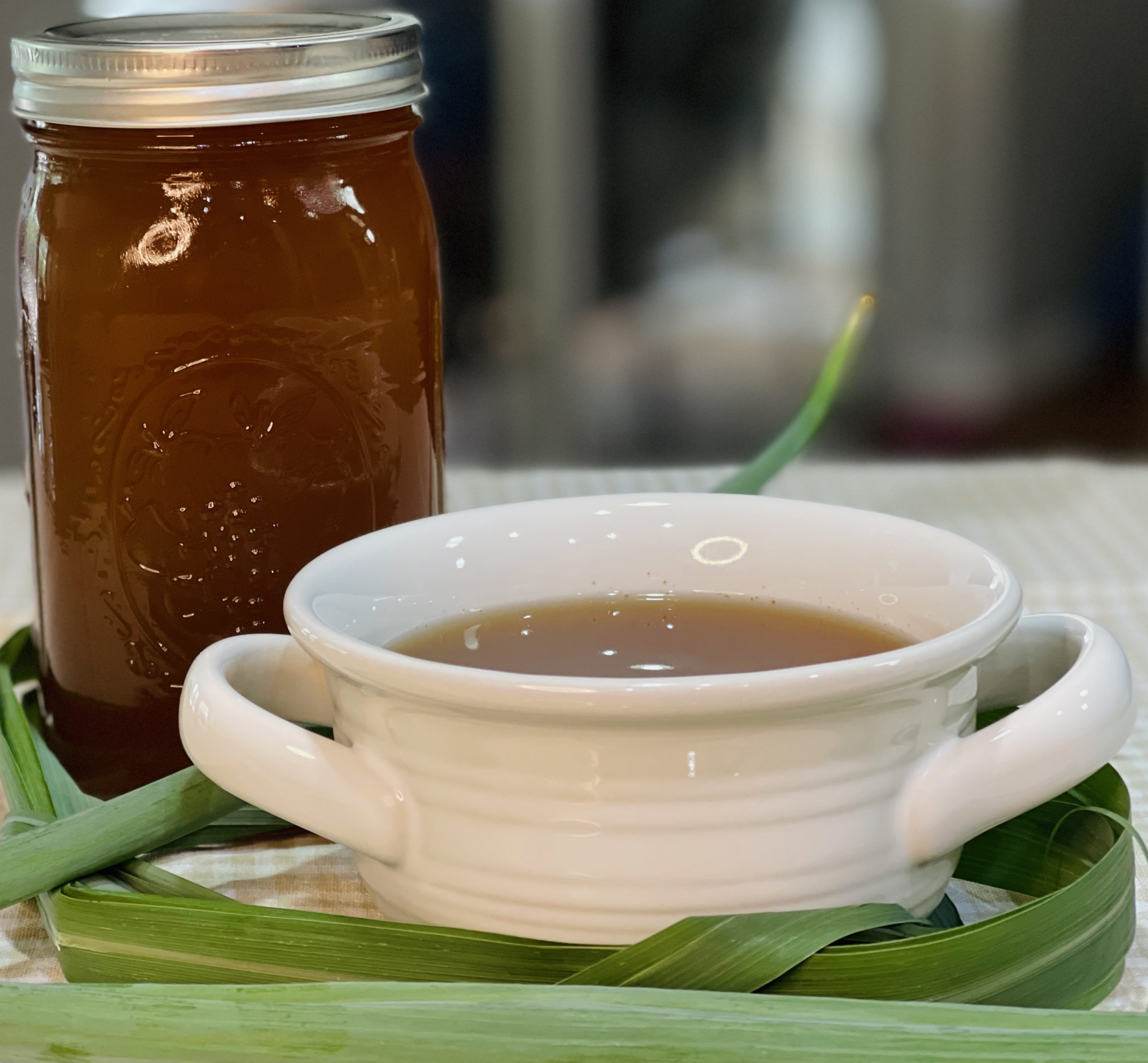
A Rich No-Waste Vegetable Stock Made With Vegetable Scraps
Equipment
- 8 qt Stockpot (or Pressure Cooker)
- Large Fine-Mesh Strainer ( or Colander)
Ingredients
What to freeze:
- tomato skins and tops
- bulb onion skins and cut tips i.e. Spanish onions, yellow onions, sweet onions, red onions, shallots, etc.
- carrot peels and ends
- celery scraps, leaves, and ends
- garlic peels, cut tips, and scraps
- herb stems and leaves
- any green onion scraps i.e. scallions
- leeks trimmings rinsed very well
- lemongrass
- mushroom trimmings i.e. portobello stalks
- ginger peels
- cobs of corn
- bell pepper stems, seeds, leaves, and scraps
For the broth:
- 8 cups vegetable scraps or a half-full gallon-sized freezer bag
- 2 tsp whole black peppercorns you can substitute with 1 tsp ground pepper
- 8 cups water
- 1 tsp salt
Optional:
Instructions
How to freeze vegetable scraps:
- Place the vegetable scraps in the freezer bag, remove all excess air, seal completely, and store in the freezer for up to 10 months.
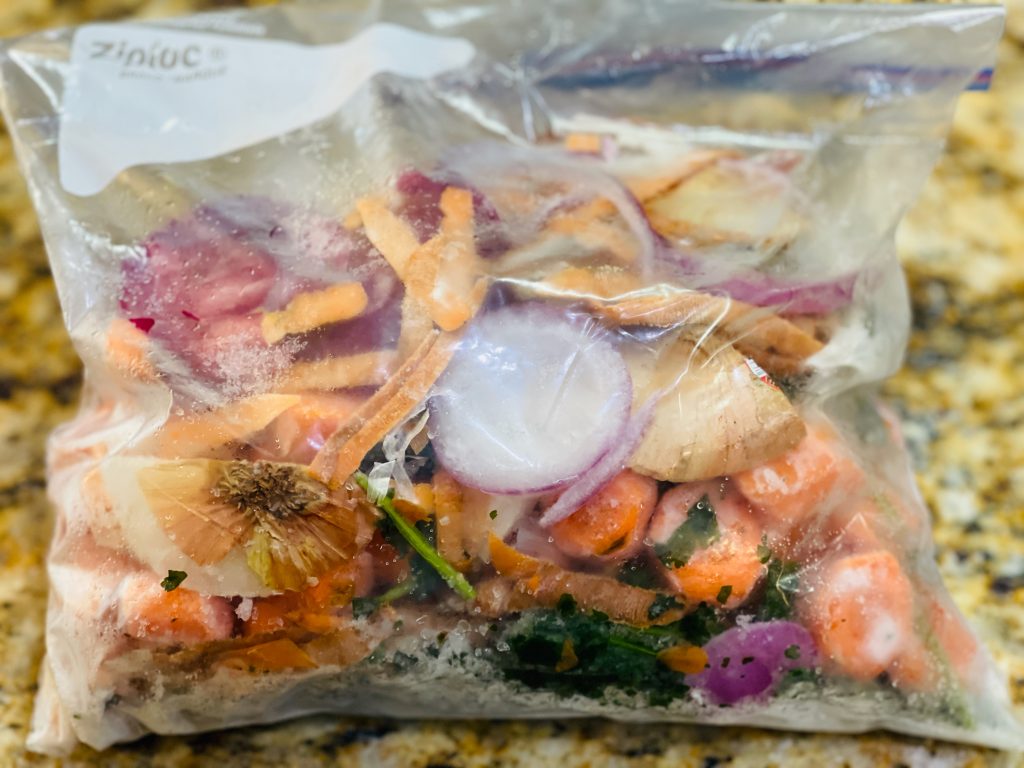
To make stock:
- In an 8 qt stockpot or pressure cooker, add the frozen vegetable scraps.
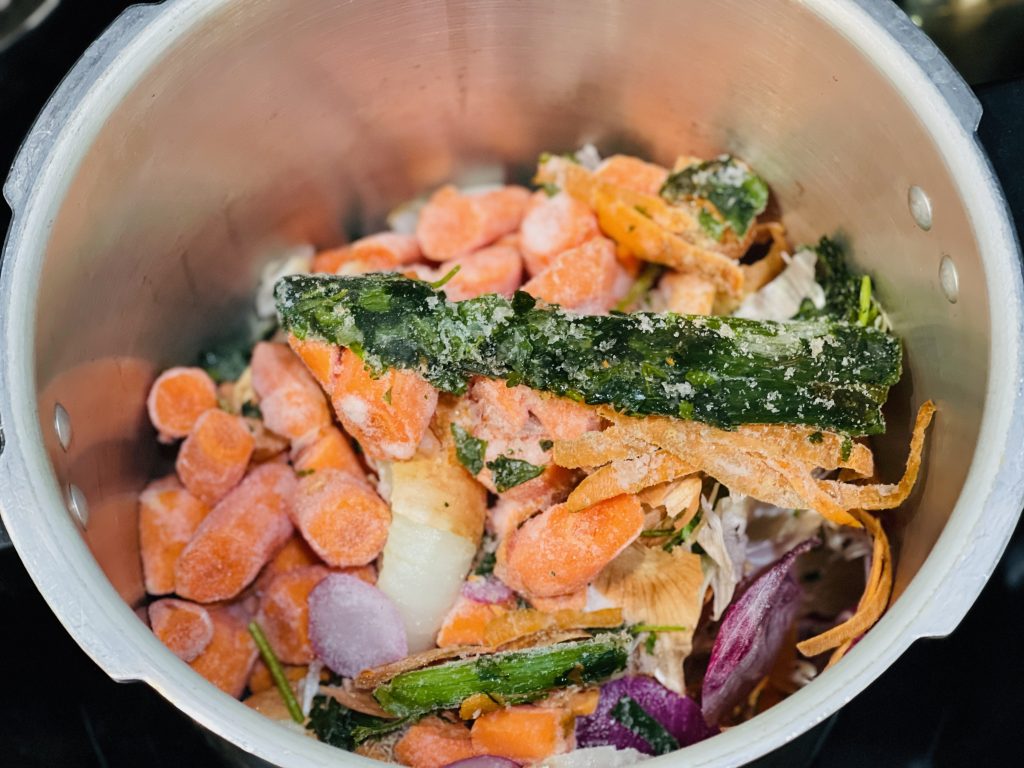
- Measure the depth of the vegetables and double the depth by adding water, approximately 8 cups of water. If you're using a pressure cooker, do not fill more than ⅔. Overfilling can cause liquid to spew from the pressure release valve.
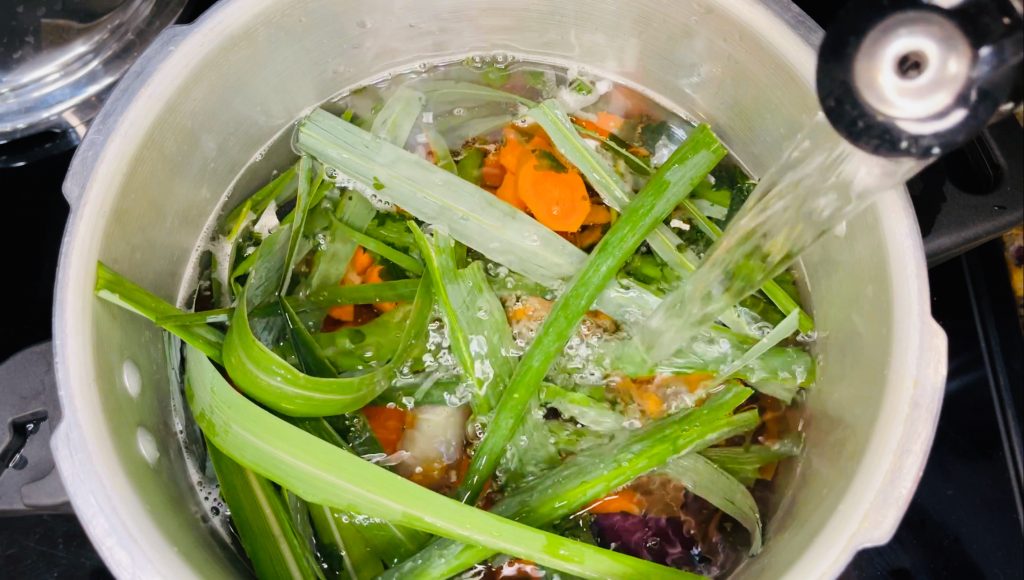
- Add in the salt, whole black peppercorns, and optional bay leaves.
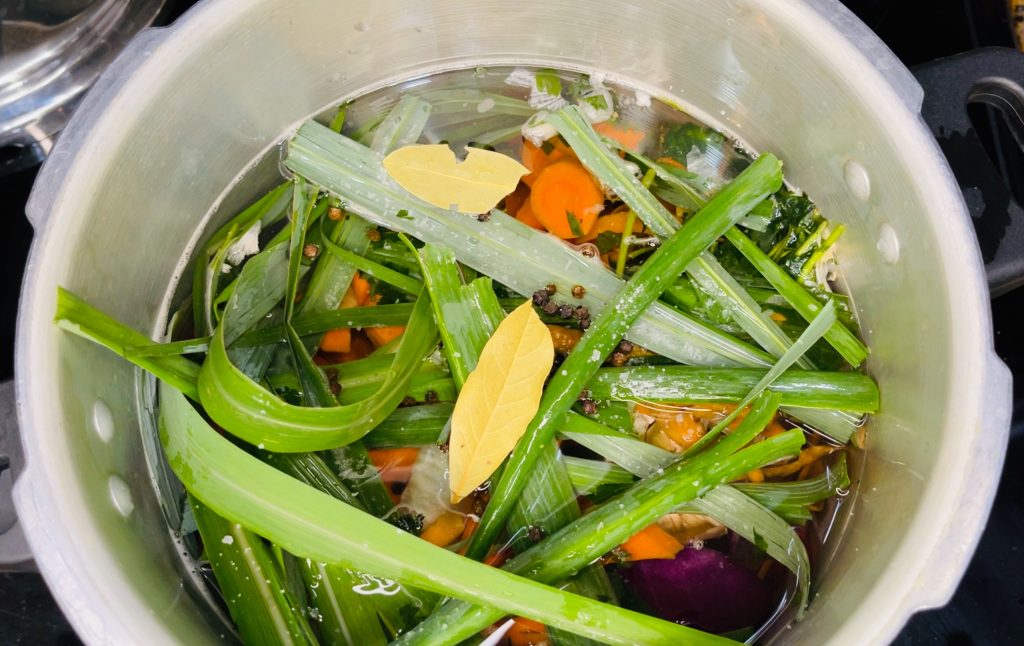
If using a stockpot:
- Over high heat, bring to a boil and then cover and lower to a simmer over medium-low to low heat.
- Let simmer for 4-12 hours; the longer, the better.
- After at least 4 hours, taste the vegetable stock. You're looking for a rich vegetable flavor; if it tastes like watered-down tea, you need to cook it longer.
- When your vegetable stock is ready, place a colander or a large fine-mesh strainer into another large pot or mixing bowl and pour out the contents from your stockpot into the strainer. Lift the strainer, containing all of the vegetable scraps, from the large pot or mixing bowl and hold it just above, filtering out the last drops of stock.
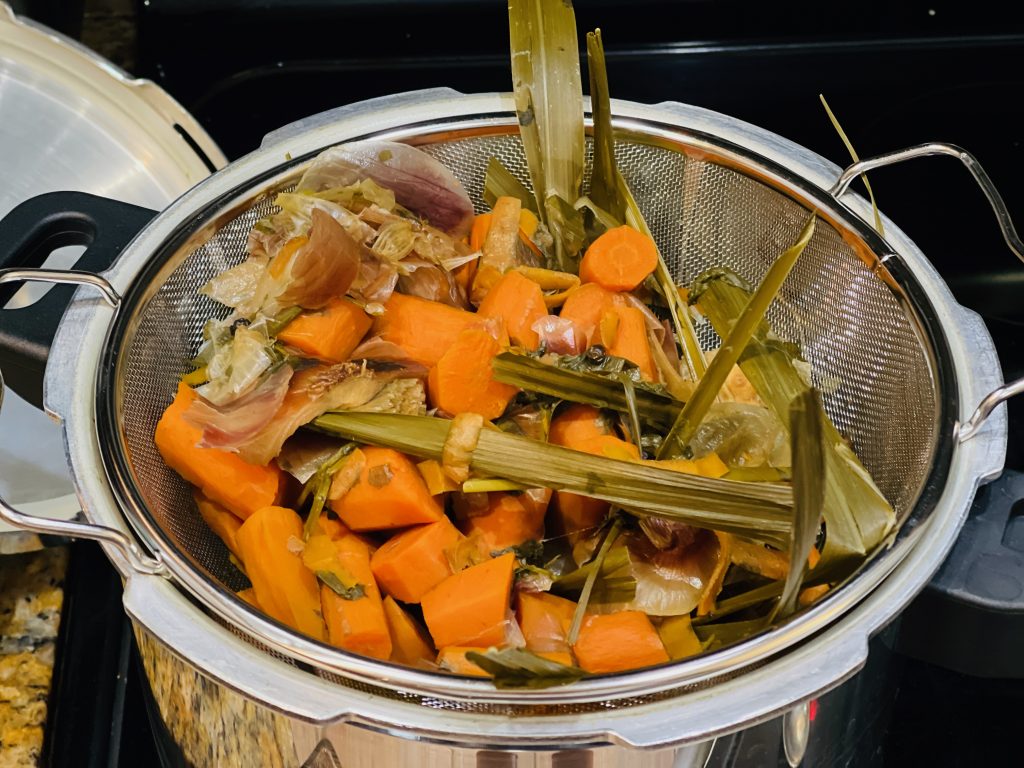
- You should only have vegetable stock left in the pot or bowl. Set aside to cool. Use immediately, refrigerate for up to 5 days, or store in the freezer for no longer than 3 months.
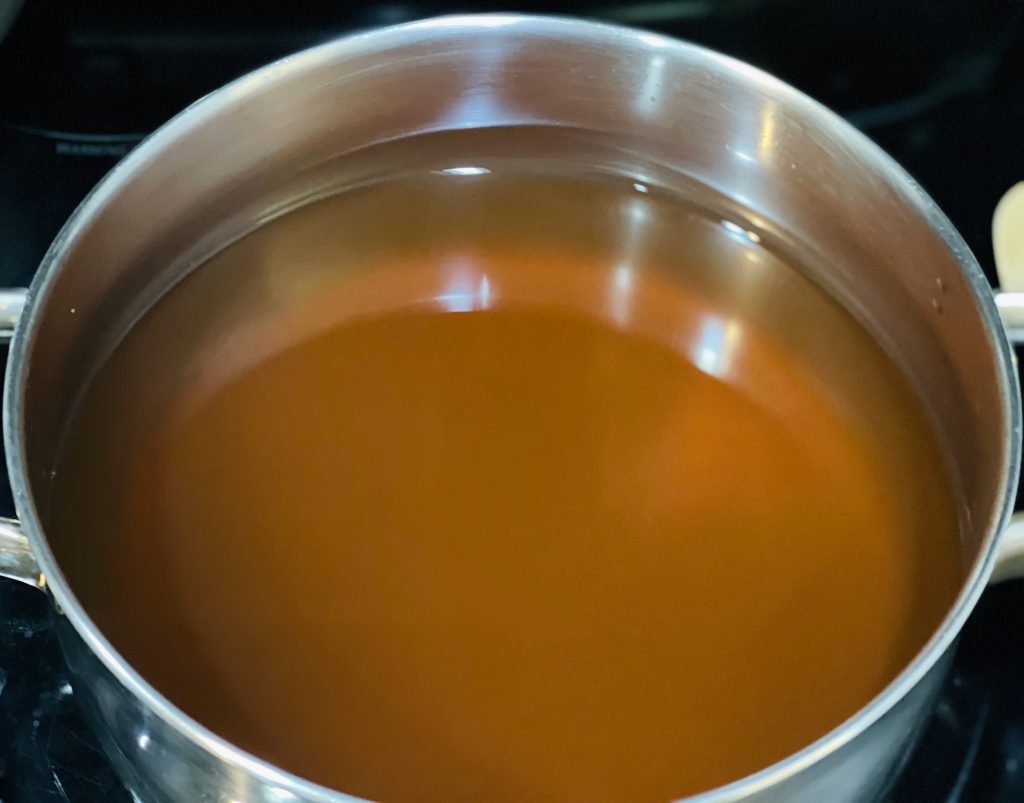
If using a pressure cooker:
- Secure pressure cooker lid and raise heat to high heat.
- Once you hear the pressure cooker hissing, lower heat to low and leave to cook for 2-4 hours; the longer, the better.
- After at least 2 hours, release all of the pressure from the pressure cooker until the float valve drops and you no longer hear steam escaping. Taste the vegetable stock. You're looking for a rich vegetable flavor; if it tastes like watered-down tea, you need to cook it longer.
- When your vegetable stock is ready, place a colander or a large fine-mesh strainer into another large pot or mixing bowl and pour out the contents from your pressure cooker into the strainer. Lift the strainer, containing all of the vegetable scraps, from the large pot or mixing bowl and hold it just above, filtering out the last drops of stock.

- You should only have vegetable stock left in the pot or bowl. Set aside to cool. Use immediately, refrigerate for up to 5 days, or store in the freezer for no longer than 3 months.

No-Waste:
- Freeze any vegetables you have on hand that may expire before you're able to use them.
Pro Tip:
- If using a stockpot, once you bring your stock to a boil, you can set your oven to 200 degrees, remove the lid and let it cook low and slow overnight. I do not recommend this method for households with small children or ovens without locking mechanisms.
- Leave 1" of space if using glass Ball jars to store your stock in the freezer.
Notes
Nutrition
Did you make this recipe?
Please let me know how it turned out for you! Leave a comment below, tag @domesticgourmet on Instagram, and hashtag #domesticgourmet.
About the Author: Ciji Castro
Ciji Castro is the CEO and Executive Chef behind Domestic Gourmet, a premium food and lifestyle brand rooted in honoring ancestral cooking and Latin traditions. With a deep love for bold, heritage-inspired flavors and clean ingredients, Ciji leads the vision and culinary direction of Domestic Gourmet’s product line.
Her flagship product, 🌿 Domestic Gourmet Organic Annatto Oil – Aceite de Achiote, brings vibrant color and flavor to every dish—celebrating the flavors of her Cuban and Puerto Rican roots while meeting the standards of today’s health-conscious kitchens.
Through Domestic Gourmet, Ciji is on a mission to share the richness of cultural cooking with a modern and convenient twist—one thoughtfully crafted product at a time.
Follow along at @domesticgourmet for recipes, cooking tips, and more.


I love this idea for making vegetable stock! Super easy and most important, no waste, 🙂 thank you for posting Cigi
This was my first go at making homemade stock and it turned out delicious. I am excited to turn it into soup. Not only did the stock turn out well, but my whole house smelled amazing all day. My next batch I will save more types of veggies and see how it impacts the flavor. I will definitely be repeating this recipe.
So…I don’t have to blanch anything?? Amazing. Also do you think it would be good or bad to just blend it all together for more of a stew broth at the end? I have a strong food processor. Thank you for posting!
Hi Moi! Great question! If you’re using scraps, I would recommend straining and not blending.